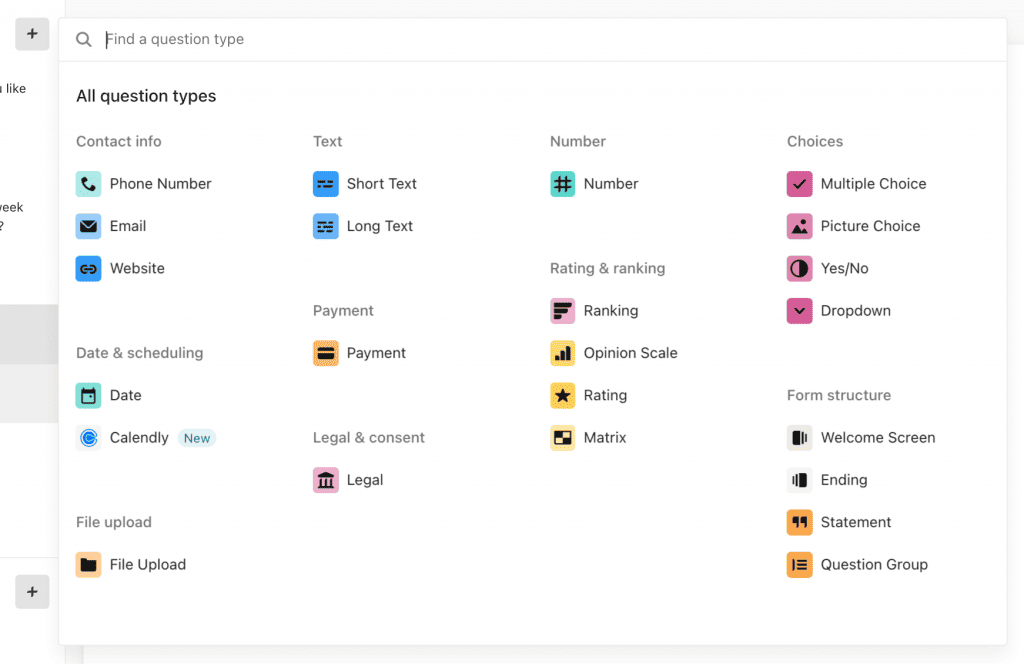Good questionnaires can bring wonders, and we're here to give you the guide on how to make questionnaire in research for guaranteed success.
We'll also cover putting all the pieces together so your questionnaire is fire from start to finish. By the end, you'll know surveys inside and out.
Sound good? Then let's dive in!
When we're done, you'll be a questionnaire wizard. You'll have all the tools to start collecting awesome answers.
Tips to make your research better
Spark Team Energy! Kick off your brainstorming session with word cloud, online polls, live quizzes, and icebreaker games to boost engagement and motivation. Don't underestimate the power of engagement! Scheduled downtime and fun time with your team can enhance your energy and fuel innovative thinking during research.
📌 Learn more: Conducting job satisfaction questionnaire along with tips to give constructive criticism
Table of Contents
- What Makes a Good Questionnaire?
- How to Make Questionnaire in Research
- Key Takeaways
- Frequently Asked Questions

Looking for More Fun During Gatherings?
Gather your team members by a fun quiz on AhaSlides. Sign up to take free quiz from AhaSlides template library!
🚀 Grab Free Quiz☁️
What Makes a Good Questionnaire?
A good questionnaire yields the desired result. If it doesn't serve your intended purpose, it's not a good one. The key characteristics of a good questionnaire are:

Clarity:
- Clear purpose and research objectives
- Language is easy to understand and has a clear formatting
- Unambiguous wording and defined terms
Validity:
- Relevant questions that address research aims
- Logical flow and grouping of items
Efficiency:
- Concise while providing needed context
- Estimated length of time to complete
Accuracy:
- Unbiased and avoids leading questions
- Simple, mutually exclusive response options
Completeness:
- Covers all necessary topics of interest
- Leaves space for additional comments
Privacy:
- Ensures anonymity of responses
- Explains confidentiality upfront
Testing:
- Pilot tested on small group first
- Incorporates resulting feedback
Delivery:
- Considers both print and online formats
- Mixes question styles (multiple choice, ranking, open-ended) for interest
How to Make Questionnaire in Research
#1. Decide what you try to do

Figure out what you need to know from the respondents to hit your survey's goals. peep the primer and proposal for hints on this.
You probably already got some idea, but chatting with others and scanning past studies helps paint a fuller picture too.
See what others found or missed regarding similar issues. Build on existing know-how.
Also, quick informal talks with your targets give clues about what really matters. This scopes reality better than textbooks alone.
Next, define your people. First, decide who you try to get the big picture for by crunching numbers. For example, if you selling stuff, think if you want just users or everyone else to weigh in.
Also, map out who exactly you're gonna talk to. Then craft your questionnaires factoring peoples’ traits like age and background.
#2. Choose desired communication method

Now you need to pick how you're gonna link with participants for answers.
The communication method will greatly influence how you phrase the questions and what types of questionnaire in research to ask.
The main choices can be:
- Face-to-face chats
- Group speak sessions
- Video call interview
- Phone call interview
Strategising your distribution channel makes its flavours the inquiry. Personal links allow sensitive queries; remote requires adjusting style. Now you got options - what's your move?
#3. Consider question wordings

Good questions are the backbone of any good survey. To make them pop, they have to be worded to avoid any mix-ups or vagueness.
Chasing down mixed signals or wrong answers from participants misunderstanding the intention is a lost cause since you won't be able to analyse what you can't unravel.
It also matters who you are handing out the questionnaire - Think about your participants' abilities to pay attention,
Bombardings them with questions to questions and complex phrasing might stress certain crowds, don't you think so?
Also, skip the professional lingo or technical terms. Keep it simple - anyone should be able to grasp the meaning without having to search for it, especially when you're having a focus group.
#4. Think about your question types

When determining which question types to use in your research questionnaire, it is important to consider several key factors.
The objective of your study will influence whether closed-ended or open-ended questions are most suitable, with surveys and ratings tending to favour closed questions, while exploratory aims benefit from open questions.
Additionally, the experience level of your target respondents will impact question complexity, requiring simpler formats for general surveys.
The type of data you require, whether numeric, prioritised, or detailed experiential responses, will likewise guide your choice of rating scales, rankings or open responses respectively.
It is also prudent to balance open and closed question types throughout the questionnaire structure and layout to maintain participant engagement.
Commonly used closed formats include rating scales, multiple choice and filtering logic questions to efficiently collect quantitative data, while open questions provide rich qualitative insights, but require more in-depth analysis.
The right mixture of question styles aligned to your purpose and respondent factors will yield quality, useable data.
#5. Order and format your questionnaires

The sequence and overall layout of the questionnaire are important elements to think of when designing your research instrument.
It is best to start with some basic introductory or icebreaker questions to help ease respondents into the survey before delving into more complex topics.
You'll want to group similar questions together under clear headings and sections to create a logical flow from one topic to the next.
Factual information like demographics is often collected at either the beginning or end of the survey.
Place your most important core questions early on when attention spans tend to be highest.
Alternating closed-ended and open-ended question types can help maintain engagement throughout.
Avoid double-barreled questions and ensure wording is concise, clear and unambiguous.
Consistent response scales and formatting make the survey easy to navigate.
🎉 Enhance your research with a multifaceted approach! Utilize rating scales and open-ended questions to gather diverse data. Additionally, consider incorporating a live Q&A before, during, or after interviews to maximize audience engagement and ensure you capture the most valuable insights.
#6. Pilot the questionnaires
Conducting a pilot test of your questionnaire is a crucial step to take before the full implementation of your survey.
To accomplish a successful pilot, aim to gather a small sample of 5-10 individuals that are representative of your overall target population for pre-testing.
The pilot participants should be fully informed of the purpose and consent to their involvement.
Then administer the questionnaire to them via one-on-one interviews so you can directly observe how they interact with and respond to each question.
During this process, ask the respondents to think aloud and provide verbal feedback on their thoughts and level of understanding.
Once complete, conduct brief post-questionnaire interviews to debrief on any issues encountered, points of confusion and suggestions for improvement.
Use this feedback to analyse, revise and amend aspects like question-wording, sequencing or structure based on identified problems.
Key Takeaways
By taking these steps seriously and refining them as you go from test runs, you can craft your questionnaires to nail exactly what you seeking efficiently and on point.
Carefully developing and adjusting as needed ensures gathering the right details to deliver on objectives. Staying dedicated to the research means surveys that work smart, informing high-quality analysis later. This strengthens outcomes all around.
Want to get started right away? Check out some of AhaSlides' survey templates!
Frequently Asked Questions
What are the 4 parts of questionnaire in research?
There are generally 4 main parts to a research questionnaire: introduction, screening/filter questions, body and closing. Together, these 4 questionnaire components work to smoothly guide respondents through the provision of the intended data needed to address the original research aims.
What are the 5 steps in creating a questionnaire?
Here are the 5 key steps to creating an effective questionnaire for research: • Define objectives • Design questions • Organise questions • Pre-test questions • Administer questionnaire.












